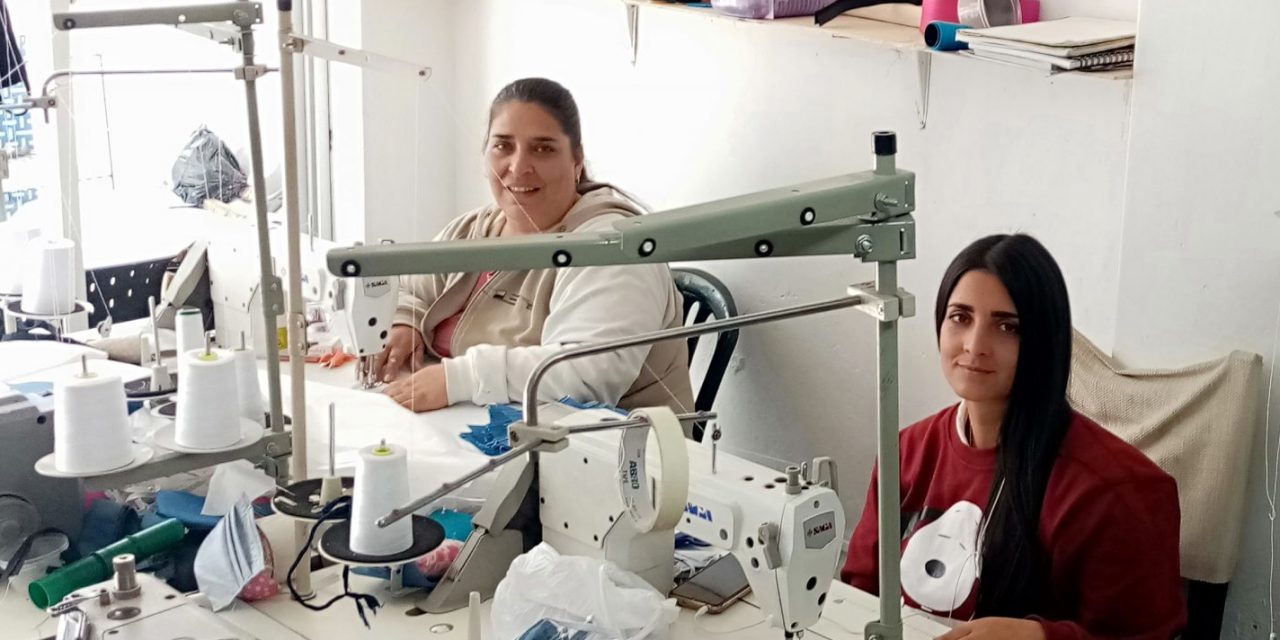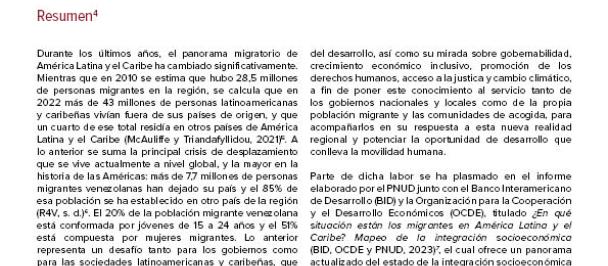Mujeres venezolanas de la Asociación Textil "Sin Fronteras" en Ecuador. Foto: PNUD Ecuador
2021 closes with more than 6 million Venezuelans who have left their country -the largest global migration crisis in recent decades- of which 5.1 million are in another country in the region. According to UNHCR figures, more than 890,000 people from the northern countries of Central America and Nicaragua have been uprooted from their homes and have sought refuge in Belize, Costa Rica, El Salvador, Guatemala, Honduras, Mexico, and Panama; data from the International Organization for Migration (IOM) revealed that between January 2016 and October 2021, more than 980,000 people, mostly young men, were deported to the Northern Triangle of Central America. These figures on human mobility in Latin America and the Caribbean show the magnitude and relevance of this phenomenon.
The growing trends of mixed migratory flows in the region demand from all social actors, resilience, flexibility, and adaptability in unfavorable contexts and are marked by the economic impacts caused by the COVID-19 pandemic, political instability, social discontent, and the effects of climate change. These impacts are much deeper and the responses are urgent, in sub-national spaces.
The starting point of this analysis must be the recognition that the most tangible effects of human mobility are perceived at the local level. Thus, both the authorities of the host municipalities and the populations are best positioned to jointly design and implement the strategies that allow the integration of the migrant population and enhance the triple gain of well-managed migration (migrant-community host country-country of origin). It is in these sub-national spaces that people in situations of human mobility become promoters of their development, also contributing to local development.
To get an idea, of the 1.3 million Venezuelans, who are in Peru, 1 million are settled in Metropolitan Lima, this means that out of every 10 people who live in this area, 2 are Venezuelan migrants. In Barranquilla, Colombia, according to official figures, 8% of its population are Venezuelan migrants and according to data from the municipality of Maicao in La Guajira, of its 185,000 inhabitants, 40,000 are Venezuelans. In Central America, the picture is very similar. According to the 2020 Population and Housing Census of the National Institute of Statistics and Geography of Mexico, Puebla has a registry of 35 thousand migrants, which represents an increase of 28 percent between 2010 and 2020.
Additionally, migratory flows with a long-term and permanent vision are becoming more frequent, as well as a trend of sustained growth in migration throughout the Latin American region. For this reason, the UNDP promotes the need to address mixed migratory flows (emigration, immigration, return, internal displacement, transit) from a development approach in Latin America, especially in Central America. This vision makes it necessary to work on two fronts: on the one hand, to support local authorities and host communities in how to incorporate the population in a situation of human mobility in development planning, how to involve key actors such as the private sector, and in promoting social cohesion as a vehicle to reduce xenophobia; and on the other, in empowering migrants themselves as active subjects of their development.
Based on the accumulated experience and the prospects for 2022, it is very important to capitalize on the opportunity that this new reality represents. This depends on the decided and coordinated action of the different actors involved, through the following lines of work:
1. Promotion of south-south cooperation. It is essential to promote dialogues and knowledge transfer on what has worked and what has not, among municipalities, countries, unions, and agencies of the United Nations System (UNS).
2. Localization of the 2030 Agenda. Understanding that if the Sustainable Development Goals (SDGs) are achieved at the local level, it will allow the construction of portfolios of coherent response and with greater possibilities of success.
3. Empowerment of the migrant population. Working with people should be a priority on the migration agenda in 2022. It is very important to understand that an empowered migrant is a migrant who contributes to the development of their host country, which has a direct effect on reducing xenophobia and discrimination and therefore in the strengthening of social cohesion.
For this, UNDP in Latin America and the Caribbean has been working and has available a series of tools such as the Toolbox Facing the challenges of forced displacement (UNDP-UNHCR), the Planning Guide for Migrant Women and Livelihoods (UNDP), and the Regional Strategy for Socioeconomic Integration for Venezuelan migrants and their host population (UNDP-ILO), to accompany the countries, local governments, national actors and as well as to promote the exchange of good practices and lessons learned with a view to migration management; Likewise, we will continue to strengthen our work with sister agencies of the UNS and other partners such as the IDB, the OECD, and the MPI.
For UNDP, in the region it is urgent to move towards migration management framed in a triple nexus that incorporates humanitarian attention, the promotion of development and peace, having people and their rights at the center and as a priority.
On this Migrant Day, at UNDP we renew our commitment to continue creating spaces for dialogue and empowerment of the population in a condition of human mobility both with host communities and with local authorities.

 Locations
Locations
